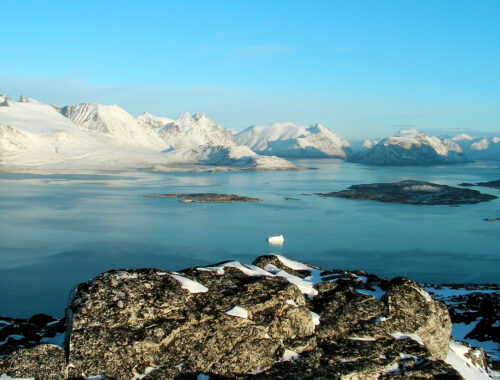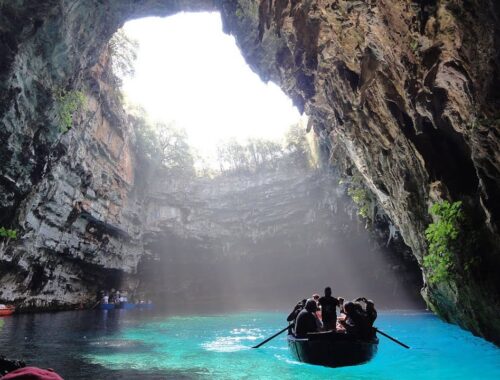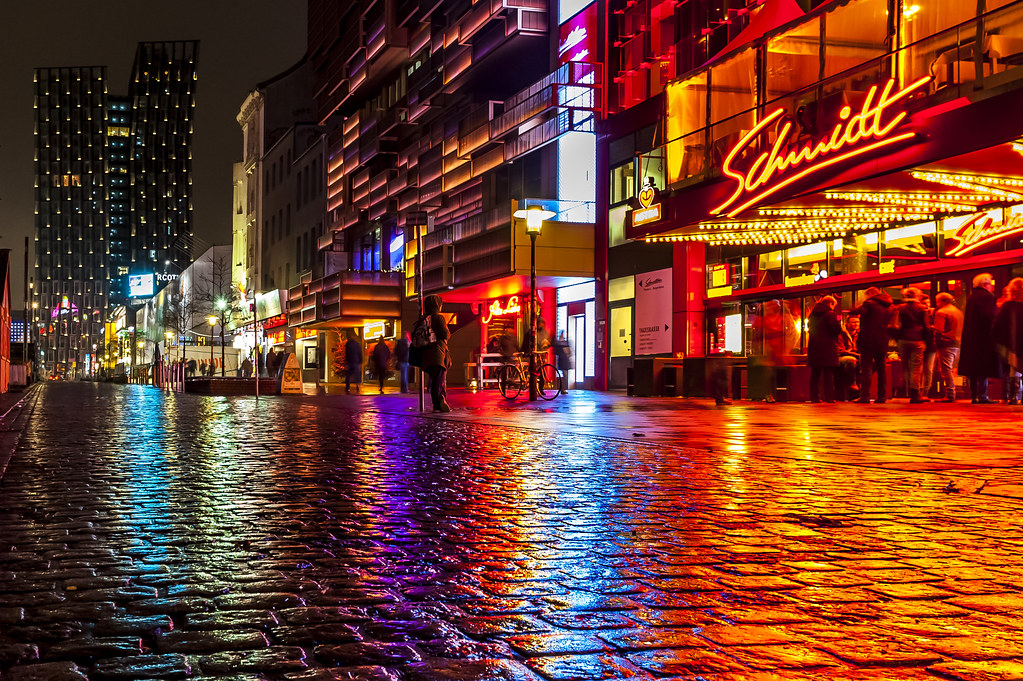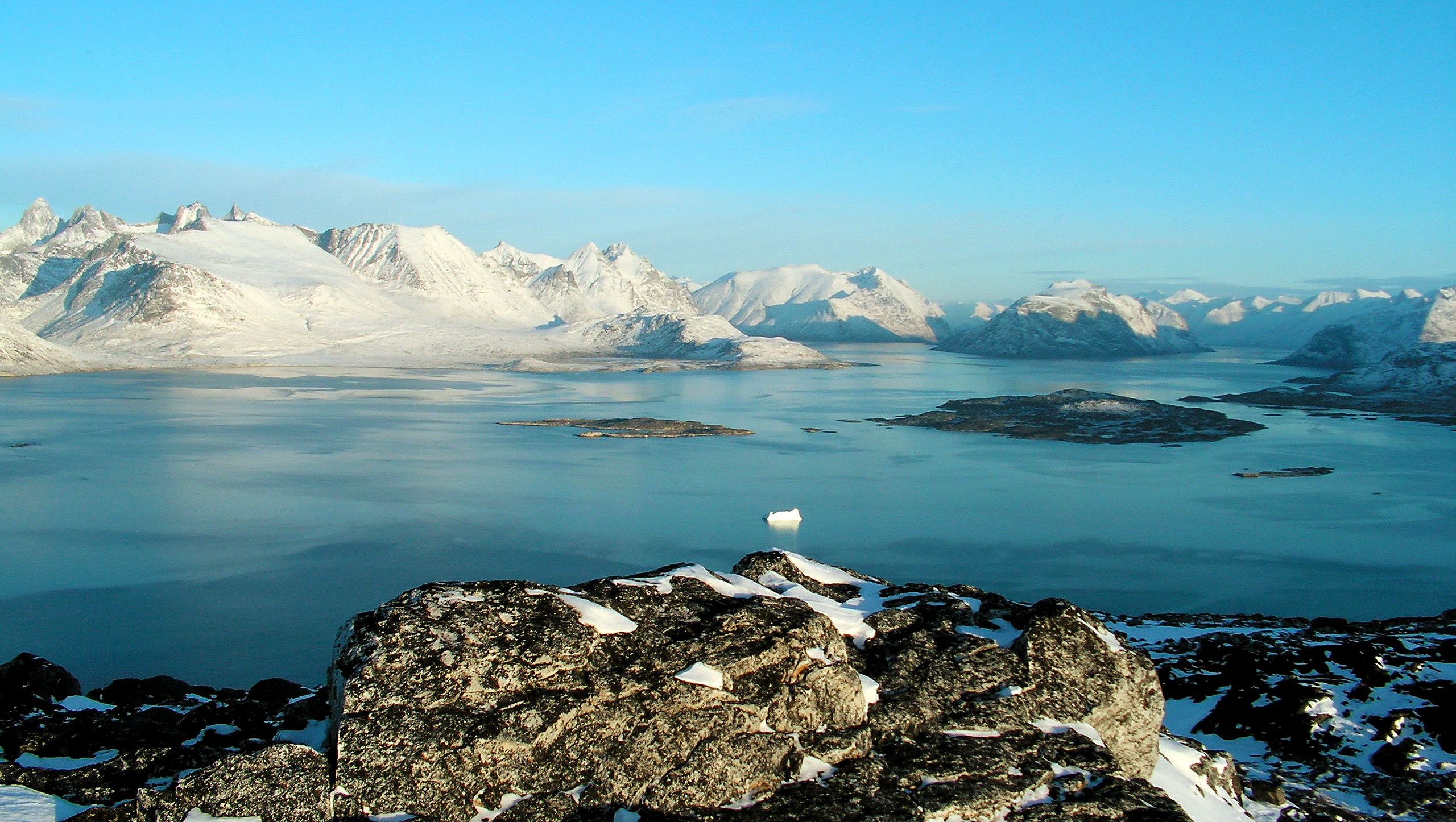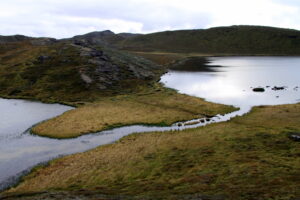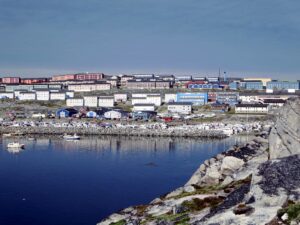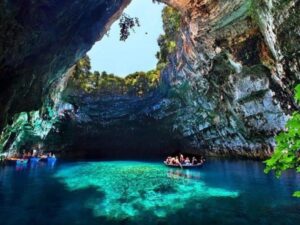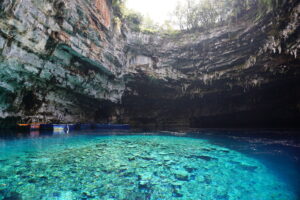When the sun sets over Germany, the country transforms into a vibrant playground for night owls and party enthusiasts. Renowned for its pulsating electronic music, buzzing beer halls, and eclectic mix of venues, Germany’s nightlife caters to all tastes. From Berlin’s legendary techno temples to Munich’s traditional beer culture, and Hamburg’s iconic Reeperbahn district, the options are as diverse as they are exciting.
Whether you’re a clubber seeking cutting-edge beats, a live music lover, or someone looking to soak in cultural nightlife, Germany promises unforgettable experiences. This guide will take you through the top nightlife cities, must-visit clubs, and insider tips to help you make the most of your night out in Germany.
1. Top Nightlife Cities in Germany
Berlin: The Capital of Techno
Berlin is often hailed as the global epicenter of electronic music. The city’s nightlife is unmatched in diversity and intensity, attracting revelers from across the globe.
- Renowned Clubs:
- Berghain: Known as the “world’s best club,” Berghain is a mecca for techno enthusiasts. It boasts unmatched sound systems, marathon parties, and a notoriously selective door policy.
- Sisyphos: A whimsical, open-air venue with festival vibes. Its outdoor spaces and quirky decor create a unique, laid-back atmosphere.
- Alternative Options:
- Explore rooftop bars like Klunkerkranich for stunning views and live DJ sets.
- Underground raves and pop-up events offer authentic Berlin experiences away from the mainstream.
Munich: Beer Culture and Upscale Clubbing
Munich may be synonymous with Oktoberfest, but its nightlife scene extends beyond steins of beer.
- Beer Halls and Gardens:
- Visit Hofbräuhaus and Augustiner Bräustuben for a quintessential Bavarian beer-drinking experience. These lively venues are perfect for mingling with locals.
- Upscale Clubs:
- P1 Club: Known as Munich’s celebrity hotspot, this exclusive venue features high-end decor and a glamorous crowd.
- Harry Klein: A techno-focused club with mesmerizing visuals that complement the beats.
Hamburg: The Reeperbahn and Beyond
Known as Germany’s “sinful mile,” the Reeperbahn district in Hamburg is a mix of nightlife, entertainment, and a dash of wildness.
- Reeperbahn Highlights:
- Grosse Freiheit 36: A historic club that offers live music and diverse DJs.
- Bars like Zum Silbersack provide a gritty, old-school vibe perfect for an authentic Hamburg experience.
- Indie and Live Music:
- Venues like Molotow are famous for hosting up-and-coming indie and punk bands.
- The stunning Elbphilharmonie is a must-visit for jazz and classical music lovers.
Frankfurt: Electronic Beats in a Cosmopolitan Hub
Frankfurt may be known for its skyscrapers, but it also boasts an electric nightlife scene, particularly for electronic music lovers.
- Top Clubs:
- Robert Johnson: Located in Offenbach, just outside Frankfurt, this intimate club is revered for its incredible sound system and cutting-edge electronic acts.
- Gibson Club: A chic, modern venue with a mix of electronic, house, and mainstream hits.
2. Types of Nightlife Experiences
Electronic Music and Techno Clubs
Germany is synonymous with techno, and no trip is complete without experiencing its dynamic electronic music scene.
- Berlin as the Epicenter: Clubs like Berghain and Tresor are legendary, but cities like Frankfurt and Cologne also have thriving electronic music venues.
- Festivals: Events like Time Warp in Mannheim and Mayday in Dortmund draw global crowds.
Beer Halls and Pubs
Munich’s beer culture is iconic, but traditional pubs can be found across Germany.
- Famous Beer Halls:
- Hofbräuhaus: This historic beer hall in Munich is a must-visit for its lively atmosphere and Bavarian charm.
- Paulaner Bräuhaus: Known for its freshly brewed beer and hearty food.
- Pub Crawl Hotspots: Many cities offer organized beer tours, particularly in areas like Berlin’s Kreuzberg district.
Live Music Venues
Germany is a haven for live music lovers, offering everything from jazz clubs to massive arenas.
- Top Venues:
- Columbiahalle in Berlin is perfect for indie and rock concerts.
- Elbphilharmonie in Hamburg is an architectural marvel and a world-class concert venue.
Alternative Party Scenes
For a twist on traditional nightlife, Germany offers creative venues and cultural hotspots:
- Rooftop Bars: Enjoy cocktails with panoramic views at places like Munich’s Mandarin Oriental Rooftop Bar.
- Cultural Festivals: Open-air cinemas, food festivals, and seasonal markets provide unique nighttime activities.
3. Must-Visit Nightclubs in Germany
Berlin
- Berghain: Often described as the pinnacle of the techno scene, Berghain is famous for its industrial design and world-class DJs. Pro tip: Dress casually, avoid large groups, and be respectful at the door.
- Sisyphos: A sprawling club with multiple dance floors, beach areas, and a festive vibe. It’s like attending a mini-festival.
Hamburg
- Mojo Club: A sophisticated venue featuring jazz, funk, and soul music.
- Grosse Freiheit 36: This venue has hosted legends like The Beatles and continues to attract music lovers of all genres.
Munich
- P1 Club: A glamorous venue frequented by celebrities and high society. Dress smart-casual to blend in.
- Harry Klein: A smaller but equally impressive club for techno enthusiasts, known for its immersive light shows.
4. Tips for Enjoying Germany’s Nightlife
Dress Codes
- Berlin’s techno clubs favor casual, understated looks—dark colors are key.
- Upscale clubs like P1 in Munich require a more polished appearance, such as collared shirts or stylish dresses.
Timing Your Night Out
- Most clubs in Berlin open late, with peak hours between 1 a.m. and 5 a.m.
- Beer halls in Munich are liveliest in the evening but close earlier than clubs.
Local Etiquette
- In beer halls, don’t forget to say “Prost!” (Cheers!) before taking a sip.
- Avoid taking photos in techno clubs; it’s often against the rules to preserve the atmosphere.
5. Safety and Practical Advice
Staying Safe
- Keep an eye on your belongings, especially in crowded areas.
- Travel in groups, and use well-lit areas when walking late at night.
Transportation
- Public Transport: Most cities have night buses and trains that run throughout the weekend.
- Ride-Hailing Apps: Services like Uber and local taxis are widely available.
Entry Policies
- Clubs like Berghain are known for strict door policies. Be polite and prepared to wait in line.
Frequently Asked Questions (FAQs)
What city in Germany has the best nightlife?
Berlin is the ultimate nightlife capital, but Hamburg and Munich offer unique experiences worth exploring.
What is the legal drinking age in Germany?
The legal age is 16 for beer and wine and 18 for spirits.
Are there entry fees for clubs in Germany?
Yes, most clubs charge entrance fees, typically between €5 and €20.
What should I wear to a nightclub in Germany?
Dress codes vary by venue. Keep it casual for Berlin’s techno clubs but opt for smart-casual at upscale venues like P1 in Munich.
Is tipping expected at bars in Germany?
Tipping is appreciated but not mandatory. Rounding up your bill or adding 5–10% is common.
Conclusion: Embrace Germany’s Nightlife Adventure
Germany’s nightlife is as diverse as its culture, offering something for everyone. Whether you’re dancing until dawn in Berlin’s techno temples, enjoying a pint at Munich’s beer halls, or exploring the lively Reeperbahn in Hamburg, the experiences are unforgettable.
Plan your evenings carefully, stay safe, and dive into the unique party culture that makes Germany one of the world’s top nightlife destinations. Prost to your next adventure!
Welcome to Greenland: a land of untamed beauty, where Arctic wonders unfold against a backdrop of icy grandeur. As the world’s largest island, Greenland boasts landscapes that are nothing short of awe-inspiring, inviting adventurers and nature enthusiasts alike to explore its pristine wilderness.
In Greenland, every corner tells a story, steeped in a culture as rich and diverse as the landscapes themselves. From towering glaciers to quaint settlements, the island offers a tapestry of experiences that captivate the soul and ignite the imagination.
Whether you’re seeking adrenaline-pumping adventures or serene moments of reflection, Greenland has something to offer everyone. Get ready to embark on the journey of a lifetime as we delve into the top 10 unforgettable things to do in this Arctic paradise. From dog sledding across vast expanses of ice to immersing yourself in indigenous traditions, Greenland promises to leave an indelible mark on your heart and soul.
Top 10 Unforgettable Activities in Greenland
Witness the Majesty of Glaciers
Greenland is home to some of the most spectacular glaciers in the world, and one of the must-see destinations is the Ilulissat Icefjord, a UNESCO World Heritage Site. Here, massive icebergs calve from the Sermeq Kujalleq glacier, creating a breathtaking display of nature’s power.
- Ilulissat Icefjord: Marvel at the sheer scale of this natural wonder as you witness icebergs as tall as skyscrapers floating serenely in the fjord.
- Boat Tours: Embark on a boat tour to get up close to the towering ice formations, feeling the chill of the Arctic air as you navigate through crystal-clear waters.
- Kayaking Amidst Icebergs: For a more intimate experience, kayak amidst the icebergs, immersing yourself in the tranquility of the Arctic landscape while paddling through icy waters.
- Helicopter Rides: For a truly grand perspective, opt for a helicopter ride over the Ilulissat Icefjord, where you can take in panoramic views of glaciers stretching as far as the eye can see.
Hike Through Breathtaking Scenery
Arctic Circle Trail
The Arctic Circle Trail offers hikers a once-in-a-lifetime experience, traversing 100 miles of some of the most stunning landscapes in Greenland. Here, you’ll find yourself immersed in the raw beauty of the Arctic wilderness, surrounded by towering mountains, pristine lakes, and vast expanses of tundra.
- Scenic Trails: As you hike along the Arctic Circle Trail, you’ll be treated to breathtaking views of glaciers and fjords, each turn revealing a new panorama of natural wonder.
- Difficulty Levels: The trail caters to hikers of all skill levels, with options for beginners and experienced trekkers alike. Whether you’re looking for a leisurely stroll or a challenging adventure, there’s something for everyone on the Arctic Circle Trail.
Other Scenic Trails
In addition to the Arctic Circle Trail, Greenland offers a myriad of other scenic hiking trails, each offering its own unique charm and beauty.
- Glacier Views: Explore trails that wind their way through glacier-carved valleys, offering glimpses of sparkling ice formations and ancient geological wonders.
- Fjord Vistas: Hike along trails that hug the edges of majestic fjords, where towering cliffs meet the crystal-clear waters of the Arctic Ocean, creating a landscape of unparalleled beauty.
Experience the Thrill of Dog Sledding
Dog Sledding: A Traditional Greenlandic Mode of Transportation
Dog sledding holds a special place in Greenland’s history and culture, serving as a traditional mode of transportation for centuries. In this rugged Arctic landscape, where vast stretches of ice and snow make travel challenging, dogsled teams have long been relied upon to navigate the frozen terrain.
- Historical Significance: Dog sledding has been integral to Greenlandic life for generations, with sled dogs playing a vital role in hunting, transportation, and communication across remote communities.
- Cultural Heritage: Today, dog sledding remains an important part of Greenlandic culture, celebrated through annual sled dog races and cultural events that honor the bond between humans and their canine companions.
Exploring the Winter Wonderland via Dog Sled
Embarking on a dog sledding adventure offers a truly unique way to experience Greenland’s winter wonderland. As you glide across pristine snowfields and wind through icy fjords, you’ll be enveloped in the silence of the Arctic wilderness, with only the soft padding of paws and the swish of sled runners breaking the stillness.
- Immersive Experience: Dog sledding allows you to connect with nature in a way that few other activities can match, as you journey through landscapes untouched by modern civilization.
- Sensory Delights: Feel the crisp Arctic air against your face, hear the gentle panting of the sled dogs, and marvel at the beauty of snow-capped mountains reflected in frozen lakes.
Go Whale Watching in Pristine Waters
Abundance of Marine Life
Greenland’s pristine waters teem with an abundance of marine life, making it a prime destination for whale watching enthusiasts. From majestic humpback whales to graceful minke whales, these Arctic waters are home to a diverse array of cetaceans that captivate and inspire.
- Humpback Whales: Witness the awe-inspiring sight of humpback whales breaching and diving gracefully in their natural habitat. These gentle giants migrate to Greenland’s coastal waters during the summer months to feed on rich marine resources.
- Minke Whales: Keep an eye out for minke whales, known for their sleek, streamlined bodies and playful behavior. These smaller whales are often spotted swimming alongside boats or surfacing near the shore, offering unforgettable encounters for lucky observers.
Best Times for Whale Watching
While whale watching in Greenland is possible throughout the summer months, there are certain times of the year when sightings are particularly abundant.
- Summer Season (June-August): The summer months are prime whale watching season in Greenland, as the warmer weather draws whales to the surface in search of food. During this time, travelers have the best chance of spotting humpback whales, minke whales, and other marine mammals in the waters around Greenland.
- Migration Periods: Keep an eye out for the spring and fall migration periods, when whales pass through Greenland’s coastal waters on their way to and from their breeding grounds. These transitional seasons offer unique opportunities to witness large numbers of whales as they travel along their migratory routes.
Embrace Local Culture in Colorful Towns
Nuuk: Capital City with Cultural Gems
Nuuk, Greenland’s capital city, is a vibrant hub of culture and history, offering visitors a diverse array of experiences.
- Museums: Explore the Greenland National Museum and Archives, where exhibits showcase the island’s fascinating history, from ancient Inuit artifacts to contemporary Greenlandic art.
- Cultural Centers: Visit Katuaq, Nuuk’s cultural center, which hosts events, performances, and exhibitions celebrating Greenlandic culture and heritage.
Smaller Towns and Settlements
Beyond Nuuk, Greenland is dotted with smaller towns and settlements, each offering its own unique glimpse into traditional Greenlandic life.
- Ilulissat: Discover the charming town of Ilulissat, nestled beside the majestic Ilulissat Icefjord. Here, you can stroll through colorful streets, visit local shops and cafes, and immerse yourself in the rhythms of everyday life in the Arctic.
- Qaqortoq: Explore the picturesque town of Qaqortoq, known for its vibrant street art scene and quaint wooden houses. Don’t miss the Qaqortoq Museum, where exhibits shed light on the town’s history and culture.
- Tasiilaq: Journey to the remote settlement of Tasiilaq, located on the rugged east coast of Greenland. Here, you can experience traditional Inuit culture firsthand, with opportunities to visit local artisans, participate in cultural events, and learn about the indigenous way of life.
Hunt for the Aurora Borealis (Northern Lights)
Best Times and Locations
Greenland offers prime viewing opportunities for the Northern Lights, also known as the Aurora Borealis, with certain times and locations providing optimal conditions for witnessing this magical phenomenon.
- Winter Months: The best time to see the Northern Lights in Greenland is during the winter months, from October to March, when the nights are long and dark.
- Northern Regions: Head to the northern regions of Greenland, such as Ilulissat or Uummannaq, where the clear Arctic skies offer ideal conditions for viewing the Aurora Borealis.
The Magical Phenomenon
The Northern Lights are a natural light display caused by the interaction of solar particles with the Earth’s magnetic field, creating stunning patterns and colors in the night sky.
- Captivating Colors: Witness hues of green, purple, blue, and pink dance across the horizon in a mesmerizing display of light and motion.
- Unforgettable Experience: Gaze in awe as the Aurora Borealis weaves its spellbinding tapestry overhead, illuminating the darkness with its otherworldly beauty.
Explore Greenland by Cruise
Expedition Cruises for In-Depth Exploration
Expedition cruises offer travelers the opportunity to explore Greenland’s remote and pristine landscapes in-depth, venturing to areas that are often inaccessible by other means.
- Remote Areas: Expedition cruises take you to the far reaches of Greenland, where you can discover untouched wilderness, towering glaciers, and rugged coastlines.
- In-Depth Exploration: With expert guides and onboard amenities, expedition cruises provide a comfortable yet immersive way to experience Greenland’s natural wonders, allowing you to delve into the history, culture, and wildlife of the region.
Smaller Cruises for Specific Regions or Wildlife Viewing
For those seeking a more intimate experience or focusing on specific regions or wildlife, smaller cruises offer tailored options.
- Regional Focus: Some cruises may focus on specific regions of Greenland, such as the Disko Bay area or the Scoresby Sund fjord system, allowing travelers to explore these areas in detail.
- Wildlife Viewing: Other cruises may prioritize wildlife viewing opportunities, taking you to prime locations for spotting whales, seals, seabirds, and other Arctic creatures in their natural habitats.
Kayak Through Glacial Lagoons
Experience the Serene Beauty
Kayaking through Greenland’s glacial lagoons offers a unique and intimate way to immerse yourself in the serene beauty of the Arctic landscape.
- Crystal-Clear Waters: Glide through crystal-clear waters, surrounded by towering icebergs and majestic glaciers that reflect the Arctic light in mesmerizing hues.
- Close Encounters with Nature: Get up close to nature as you paddle through narrow fjords and sheltered bays, where you may spot seals, seabirds, and even whales swimming alongside your kayak.
Guided Tours for All Levels
Whether you’re a beginner or an experienced kayaker, there are guided tours available to suit every skill level and preference.
- Beginner-Friendly Tours: Join a guided tour designed for beginners, where expert instructors will teach you the basics of kayaking and ensure a safe and enjoyable experience.
- Advanced Expeditions: For experienced kayakers seeking a more challenging adventure, consider joining an advanced expedition that explores remote fjords and off-the-beaten-path locations.
Go Ice Fishing (for experienced visitors)
Traditional Winter Activity
Ice fishing is a time-honored tradition in Greenland, providing sustenance and recreation for locals and visitors alike during the long winter months.
- Cultural Significance: Ice fishing has deep cultural roots in Greenland, with communities relying on this practice for centuries to catch fish for food and trade.
- Seasonal Activity: As the temperatures drop and lakes freeze over, locals venture onto the ice to set up their fishing holes and try their luck at catching Arctic char, cod, and other cold-water species.
Importance of Safety and Responsibility
While ice fishing can be a rewarding experience, it’s essential for experienced visitors to prioritize safety and responsible fishing practices.
- Ice Thickness: Before venturing onto the ice, always check the thickness to ensure it’s safe for fishing. A minimum of 4 inches of clear, solid ice is generally recommended for walking, while at least 6-8 inches is required for fishing.
- Safety Equipment: Equip yourself with safety gear, including ice picks, a life jacket, and a rope, and never fish alone on the ice. It’s also advisable to inform someone of your plans and whereabouts before heading out.
- Responsible Fishing: Practice responsible fishing by following local regulations and guidelines, such as respecting catch limits, releasing undersized fish, and minimizing your environmental impact.
Experience the Midnight Sun
Phenomenon of the Midnight Sun
During Greenland’s summer months, the phenomenon known as the midnight sun occurs, where the sun remains visible above the horizon for 24 hours a day.
- Continuous Daylight: From late spring to early autumn, regions above the Arctic Circle, including Greenland, experience continuous daylight due to the tilt of the Earth’s axis.
- Long Summer Days: This unique phenomenon creates long summer days, with the sun never setting below the horizon, resulting in a surreal and magical atmosphere.
Unique Activities Under 24-Hour Sunlight
Greenland’s midnight sun offers the perfect backdrop for a variety of unique and memorable activities that take advantage of the never-ending daylight.
- Midnight Hiking: Experience the thrill of hiking under the midnight sun, with trails bathed in golden sunlight even in the late hours of the evening.
- Kayaking Adventures: Paddle along Greenland’s pristine coastline or tranquil fjords under the soft glow of the midnight sun, enjoying the serenity of the Arctic landscape in the twilight hours.
- Photography Expeditions: Capture stunning photographs of the ever-changing Arctic light, as the sun paints the sky with hues of pink, orange, and purple during the endless summer days.
Conclusion
Greenland offers a wealth of unforgettable experiences for travelers seeking adventure, natural beauty, and cultural immersion.
Vast Array of Experiences
- Arctic Wilderness: Explore pristine landscapes of ice and snow, where towering glaciers and majestic fjords create a dramatic backdrop for outdoor adventures.
- Cultural Richness: Immerse yourself in Greenland’s rich cultural heritage, from traditional Inuit communities to vibrant towns and cities filled with art, music, and history.
- Unique Phenomena: Witness natural wonders like the midnight sun and the Northern Lights, which illuminate the Arctic sky with their breathtaking displays of light and color.
Discover Greenland’s Hidden Gems
With its stunning landscapes, unique culture, and abundance of outdoor activities, Greenland beckons adventurers to explore its hidden gems and discover the magic of the Arctic.
FAQ
- Best Time to Visit: Summer for warm weather activities, winter for witnessing the Northern Lights.
- Getting to Greenland: Mainly by air to major towns.
- Currency: Danish krone.
- Language: Greenlandic and Danish.
- Visa Requirements: Depends on your nationality.
- Cost of Visit: Can be expensive, but planning and budgeting can help.
- Clothing: Warm layers and waterproof gear are essential.
Introduction to Kefalonian and Melissanian caves
Located in the Ionian Sea in Greece, Kefalonia stands as the largest of the Ionian Islands, known for its diverse scenery and beautiful beaches. But this sun-drenched object that meets the eye is not the island’s main attraction. It’s a place where sunlight and water dance in an ethereal ballet, far from human cacophony, buried deep underground – Melissani Caves.
To understand the Melissani Caves
Kefalonia, the Ionian island of Greece has a variety of wonderful attractions to delight every traveler. However, buried beneath the surface is a world that covers the beauty of the above, Melissani Cave. Let us unlock the secrets of the Melissani Caves and understand the importance of time to witness its unspoiled beauty.
An overview of the Melissani Caves
On the surface, the Melissani Caves are a natural wonder, an underground wonder that offers an unforgettable feast for the eyes. Let’s take a closer look to understand his inspired building.
geological features
Melissani Cave in the center of Kefalonia is 120 meters long and 40 meters wide.The highlight of the cave is undoubtedly the beautiful lake filled with salt water that covers almost the entire floor and can see this wonderful lake sparkling inside as the limestone walkways turn shades of blue reflecting the broken rays of the sun
A central island divides the cave into two rooms. Towering columns descend from the ceiling, reminiscent of a natural cathedral, while pillars rise from the cavernous floor. Part of the roof died from sagging over time and created natural skylight.
Historical context and mythological connections
Steeped in natural splendor and steeped in historical and mythological significance, Melissani Cave was named after Melisanthi, the mermaid of ancient Greek mythology and according to legend, Melisanthi was rejected and swallowed by the god Pan in this very cave-lake. This obvious connection to Greek mythology gives the cave an aura of quiet touch.
Seasonal Guide to Visiting Melissani Cave
Truly understanding and experiencing Kefalonia’s subterranean jewel, the Melissani Cave, can be a nuanced task. The cave’s unique lighting phenomenon and the island’s Mediterranean climate both factor significantly into planning your visit. Here, let’s delve into the distinctive features of visiting the cave in the spring and summer seasons.
Spring Visits
Natural beauty blooms in Kefalonia during the spring months of March to May. This season graces the island with mild temperatures and a lush landscape. Let us weigh the pros and cons.
Weather Conditions and Natural Beauty
Spring paints Kefalonia in a fresh hue. The surrounding landscape is vibrant, and mild temperatures (averaging around 15-20°C) make outdoor activities pleasant. Rain showers are sporadic and generally short-lived, rarely affecting your visit to Melissani Cave.
Pros and Cons
- Pro: The moderate climate and fewer rain disruptions make spring an opportune time for exploration. Moreover, the cave is generally less crowded, providing a serene and personal experience.
- Con: The ‘Sunbeam Effect’ within the cave is less pronounced compared to summer months due to the sun’s position. However, the ethereal blue of the lake remains, indeed, a sight to behold.
Summer Visits
Summers in Kefalonia span from June to August. This season is often described as a sensory feast for any visitor. Let’s explore.
Summer Conditions
Summers in Kefalonia mean long, sunny days with temperatures often reaching 30°C. The ample sunlight seeping into Melissani Cave during this season is nothing short of mesmerizing.
Peak Tourist Season: What to Expect
- Crowds: Summer doubles up as the peak tourist season. Expect high footfall within the cave, with visitors from all over the world converging to witness the ‘sunbeam effect’ at noon. The increased congestion might slightly mar the personal interaction with the cave but is a small price for the stunning spectacle.
- Visibility: The ‘Sunbeam Effect’ is at its zenith in summer. As the midday sun is directly overhead, sunlight streams through the opening, setting the cave floor aglow in a sublime spectacle of light and color.
Autumn Visits
The arrival of autumn (September to November) brings a change in ambiance to Melissani Cave. The island of Kefalonia starts to quiet down as the peak tourist season wanes, offering a unique perspective on the cave.
Changes in the Cave Environment During Autumn
- Temperature: The weather remains warm but becomes more bearable, with temperatures ranging from 18°C to 25°C.
- Lighting: While the summer’s sharp sunbeam effect diminishes, the softer autumn light offers a more subdued but equally beautiful illumination in the cave.
Comparatively Fewer Tourists and Weather Patterns
- Tourism: The decrease in tourist numbers means more space and quiet to enjoy the cave’s natural beauty.
- Weather: The likelihood of rain increases, potentially affecting the cave visit, yet the cooler climate makes the outdoor experience more pleasant.
Winter Visits
Winter in Kefalonia (December to February) dramatically transforms the landscape and the experience of visiting Melissani Cave.
Possible Cave Closure or Limited Hours
- Due to the limited daylight hours and potential for adverse weather conditions, Melissani Cave may have reduced visiting hours or can temporarily close during heavy winter storms.
Pros and Cons of an Off-Season Visit
- Pro: The serenity and solitude of visiting the cave in winter are unmatched. With fewer tourists, one can enjoy a peaceful exploration of the cave’s stalactites and blue waters.
- Con: The chances of cloudy days are higher, which might dim the magical light effects seen during brighter seasons. Additionally, the reduced operating hours might limit the time available for visiting.
In winter, it’s crucial to check the local weather and the cave’s operating hours before planning your visit.
Key Takeaways for Seasonal Visits:
- Autumn offers mild weather and fewer tourists, making it a sweet spot for those seeking a quieter visit with a still-enchanting light show.
- Winter brings a unique, tranquil beauty to Melissani Cave, but visitors must be mindful of the weather and potential closures.
Daily Timing and Tours
To truly capture the mesmerising beauty of Melissani Cave in Kefalonia, timing is crucial. This is not only about the season of your visit but even the hour can significantly affect your experience. Let’s explore which times of day offer the best views, how you can go about booking tours, and top tips for avoiding crowds.
Best Time of Day for Visits
The magic of Melissani cannot be overstated, but timing your visit with the transit of the sun will reveal the cave’s full splendour.
How Sunlight Affects the Cave’s Visual Appeal
Throughout the day, the sunlight that filters into the cave through the open ceiling changes in intensity. This sunlight shimmers off the cave’s blue waters, creating a mesmerising spectacle of light and hue that’s famously known as the “sunbeam effect”.
Recommended Time Slots for Capturing the Best Views
Midday, specifically between 12 pm and 2 pm, is when the sun is at its peak. This window is when sunlight directly enters the cave, and the ‘sunbeam effect’ reaches its zenith.
Booking Tours
When planning your visit to Melissani Cave, you have two options: guided tours or independent visits.
Information on Available Tours
Various tour operators offer guided visits to the cave, often as part of a Kefalonia day tour. These tours typically include transport, an informed guide, and sometimes even other local attractions.
Advantages of Guided Tours vs Independent Visits
- Guided Tours: Advantageous for those seeking informed narratives about the cave’s geology and mythology. Additionally, logistical aspects like transport are taken care of.
- Independent Visits: Allows more flexibility in terms of timing. You can pace your visit and soak in the cave’s beauty at leisure.
Tips for Avoiding Crowds
Despite its popularity, you can still carve out a peaceful space while visiting Melissani Cave.
Visiting During Less Busy Hours
Earlier in the morning or later in the afternoon, the cave is typically quieter. Despite lesser intensity of the ‘sunbeam effect’, the cave maintains an ethereal charm.
Consideration of Weekdays vs Weekends
Weekdays tend to be quieter tourist-wise compared to weekends. Especially outside of the peak season, choosing a weekday for your visit might reward you with a more solitary experience.
Planning Your Visit
Pre-Visit Checklist
Preparing for your adventure to Melissani Cave in Kefalonia ensures a smooth and enjoyable experience. Here’s what you need to consider:
Necessary Preparations
- Tickets: Check online or contact local tour operators for ticket availability. Booking in advance can save time.
- Appropriate Attire: Wear comfortable shoes for walking. The temperature inside the cave can be cooler, so consider bringing a light jacket.
- Travel Arrangements: Decide if you will use public transportation, a tour bus, or a rental car to reach the cave.
Accessibility and Facilities Available
- The entrance to the cave is accessible, but some areas may be challenging for those with limited mobility. Inquire ahead about accessibility options.
- Basic facilities like restrooms are available at the entrance.
Combining Your Visit with Other Attractions
Kefalonia is a treasure trove of natural beauty and cultural heritage. Combining Melissani Cave with other local sites maximizes your experience.
Sample Itineraries for Different Types of Travelers
- For Nature Lovers: After Melissani Cave, visit Myrtos Beach and the surrounding mountains.
- For History Buffs: Combine your visit with a trip to the Archaeological Museum of Kefalonia.
- For the Leisure Seeker: Start with Melissani Cave, have lunch in a nearby village, and end your day at Antisamos Beach.
Budgeting for the Trip
Understanding the costs involved will help you budget effectively for your trip to Melissani Cave.
General Cost Considerations
- Entrance Fee: There’s typically an admission fee for the cave. Check current rates as they can change.
- Tour Packages: These might offer value combining transportation and entrance fees but verify what’s included.
Additional Expenses
Travelers should be aware of potential additional costs:
- Transportation: Whether you’re renting a car or using public transport, factor this into your budget.
- Food and Drinks: There may be limited options available at the site, so consider bringing water and snacks or planning for meals in nearby towns.
- Souvenirs: There are small shops at the entrance selling local crafts and souvenirs. Keep some budget aside if you wish to bring back a memento.
conclusion
Choosing the best time to visit Melissani Caves greatly enhances your experience, so that you can see the incredible play of light and water in full glory Weather and safety considerations are important most of all, not only for your happiness but also in order to preserve the delicate balance of this nature ask for opinion.
Final recap and recommendations:
- When to visit: Aim for sunny days around midday for optimal lighting.
- Safety comes first: Wear appropriate clothing and follow safety precautions.
- Ecotourism: Focus on environmental impact.
A visit to Melissani Caves is not just a tourist activity; It is an opportunity to connect with the natural beauty and mythical past of Kefalonia. By following these guidelines, you can ensure that your visit is memorable, safe, and makes a positive contribution to the preservation of this unique place.


